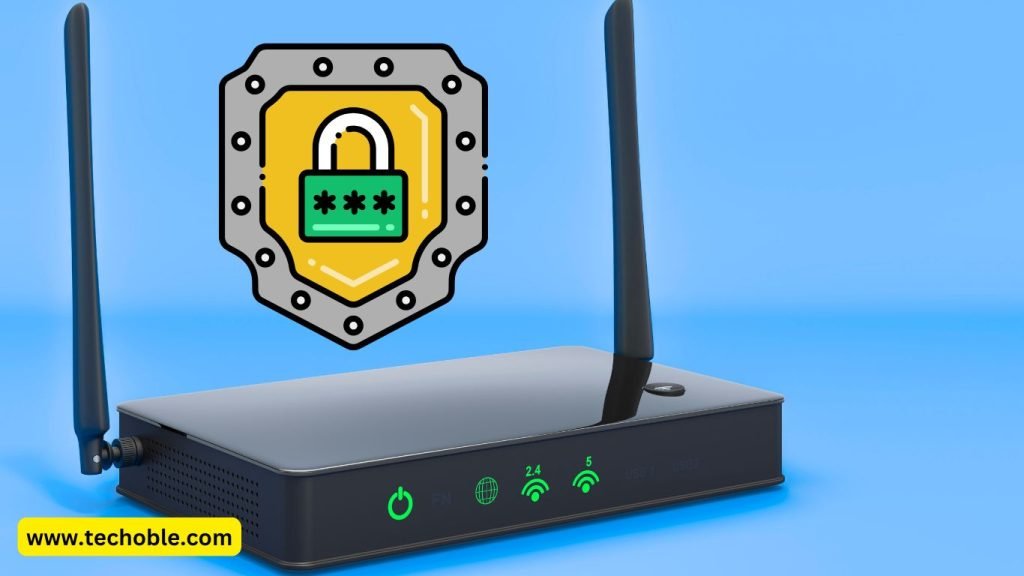 In today’s digital world, securing a wireless network is essential. Cybersecurity threats have become more sophisticated, targeting both personal and enterprise networks. This article provides clear, actionable steps to help you secure your wireless network and protect sensitive information. Here, we explore common wireless network security challenges, solutions, and best practices to help keep your Wi-Fi network safe in 2025.
In today’s digital world, securing a wireless network is essential. Cybersecurity threats have become more sophisticated, targeting both personal and enterprise networks. This article provides clear, actionable steps to help you secure your wireless network and protect sensitive information. Here, we explore common wireless network security challenges, solutions, and best practices to help keep your Wi-Fi network safe in 2025.
Understanding Wireless Network Security Issues
Wireless networks have unique vulnerabilities that make them attractive targets for cybercriminals. Unlike wired networks, wireless networks use radio waves that can be intercepted by nearby devices. This makes it critical to understand wireless network security issues and solutions.
- Interception: Hackers can intercept unencrypted data over wireless networks.
- Unauthorized Access: Weak or default passwords allow unauthorized users to connect.
- Malware Attacks: Cybercriminals can inject malicious code into unsecured networks.
- Data Theft: Sensitive data can be stolen if it is not properly secured.
What Are the 5 Best Practices for Securing a Wireless Network?
 Here are the top five best practices to secure your wireless network in 2025:
Here are the top five best practices to secure your wireless network in 2025:
- Use Strong Encryption Standards
- Enable Network Firewalls
- Set Up Strong Passwords and Authentication
- Regularly Update Firmware and Software
- Monitor and Segment Your Network
Each of these practices strengthens your wireless network’s defenses against cyber threats. Let’s dive deeper into each practice to understand how they help protect your network.
1. Use Strong Encryption Standards
 Encryption is the foundation of wireless security. Encryption transforms data into a code to prevent unauthorized access, making it essential for a secure network.
Encryption is the foundation of wireless security. Encryption transforms data into a code to prevent unauthorized access, making it essential for a secure network.
- WPA3 Encryption: WPA3 is the latest encryption standard and is highly recommended. It improves on WPA2 with stronger security for both personal and enterprise networks.
- Turn Off WEP and WPA: Older encryption methods like WEP and WPA are outdated and vulnerable to attacks. Ensure your network uses WPA3 to stay secure.
Comparison of Wireless Encryption Standards
| Encryption Standard | Security Level | Recommended Usage |
|---|---|---|
| WEP | Low | Not Recommended |
| WPA | Medium | Not Recommended |
| WPA2 | High | Good for Most Networks |
| WPA3 | Very High | Best Practice for 2025 |
Using WPA3 encryption can make a significant difference in protecting your network, especially against eavesdropping and unauthorized access.
2. Enable Network Firewalls
 A firewall serves as a protective barrier between your network and potential threats. It filters incoming and outgoing traffic based on pre-set rules, helping to block suspicious data and hackers.
A firewall serves as a protective barrier between your network and potential threats. It filters incoming and outgoing traffic based on pre-set rules, helping to block suspicious data and hackers.
- Enable Router Firewall: Most modern routers come with a built-in firewall. Make sure it’s enabled and configured properly.
- Use Intrusion Detection Systems (IDS): An IDS monitors network activity and alerts you of any suspicious activity. Some enterprise networks use IDS for advanced protection.
Firewall protection is a best practice for securing wireless networks, as it strengthens your defenses against unauthorized access and malware.
3. Set Up Strong Passwords and Authentication
 Setting up strong passwords and secure authentication methods is critical to wireless network security.
Setting up strong passwords and secure authentication methods is critical to wireless network security.
- Create Complex Passwords: Use a combination of letters, numbers, and symbols. Avoid common words and patterns.
- Change Default Passwords: Many routers come with default passwords that are easy to find online. Change these immediately to something unique.
- Enable Two-Factor Authentication (2FA): Adding 2FA adds an extra layer of security by requiring a code sent to your phone or email.
A strong password, combined with authentication methods like 2FA, makes unauthorized access much harder.
4. Regularly Update Firmware and Software
 Firmware is the software embedded in your router that controls its functions. Keeping it up-to-date is essential, as updates often include security patches for newly discovered vulnerabilities.
Firmware is the software embedded in your router that controls its functions. Keeping it up-to-date is essential, as updates often include security patches for newly discovered vulnerabilities.
- Enable Automatic Updates: Set your router to automatically update its firmware. This ensures it stays protected against the latest threats.
- Check Manufacturer’s Website: Some updates may not happen automatically. Regularly visit your router’s manufacturer website to ensure you have the latest firmware version.
Outdated firmware can leave your network exposed to hackers, so make updating a priority.
5. Monitor and Segment Your Network
 Network segmentation divides your network into multiple parts to improve security. For example, you could have separate networks for work, personal use, and guest access.
Network segmentation divides your network into multiple parts to improve security. For example, you could have separate networks for work, personal use, and guest access.
- Create a Guest Network: Set up a guest network for visitors to prevent them from accessing sensitive devices.
- Monitor Connected Devices: Regularly check which devices are connected to your network and remove any that are unrecognized.
By segmenting your network, you limit the potential impact of an attack and improve overall security.
Additional Best Practices to Secure Your Wireless Network
In addition to the top five best practices, here are some extra steps you can take to strengthen your network’s security further.
Use a VPN (Virtual Private Network)
A VPN encrypts data traveling over your network, adding an extra layer of security, especially for public or shared networks. This is particularly useful for securing enterprise Wi-Fi.
Disable WPS (Wi-Fi Protected Setup)
Wi-Fi Protected Setup (WPS) is designed to make it easier to connect devices, but it can be a security risk. Disabling WPS prevents unauthorized devices from connecting to your network.
Restrict Access Based on MAC Addresses
A wireless router security best practice is to allow only specific devices to connect. By whitelisting MAC addresses, you limit access to trusted devices, adding another layer of control.
Enterprise WiFi Security Best Practices
Enterprise networks require more robust security measures. Here are some enterprise Wi-Fi security best practices to consider:
- Use Enterprise-Grade Encryption: For businesses, WPA3-Enterprise offers advanced encryption and more access control options than WPA3-Personal.
- Implement Identity-Based Access Control: Ensure that each user has unique login credentials to reduce the risk of unauthorized access.
- Conduct Regular Security Audits: Regularly test and audit your network’s security to find and fix vulnerabilities.
By implementing these enterprise-focused best practices, businesses can maintain a high level of wireless network security.
Wireless Network Security Issues and Solutions
Despite best efforts, wireless networks still face security challenges. Here are some common security issues and their solutions:
- Weak Encryption: Using outdated encryption like WEP leaves networks vulnerable.
- Solution: Upgrade to WPA3 for stronger encryption.
- Unsecured Guest Access: Allowing guests to access your primary network can lead to breaches.
- Solution: Set up a separate guest network to limit access.
- Poor Physical Security: Routers in open areas can be tampered with.
- Solution: Place your router in a secure, centralized location in your home or office.
Wireless Network Security Issues and Solutions
| Security Issue | Solution |
|---|---|
| Weak Encryption | Use WPA3 |
| Unsecured Guest Access | Set up a guest network |
| Poor Physical Security | Place router in a secure location |
| Default Settings | Change default passwords and SSID |
Implementing these solutions helps prevent unauthorized access and data breaches.
Securing Your Wireless Network: The Future of Security
With advancements in technology, new security tools and methods are emerging to protect wireless networks. Here’s a look at some of the technologies that could shape the future of wireless network security.
- AI and Machine Learning: AI-based threat detection can analyze network traffic in real-time to identify and block threats faster.
- Quantum Encryption: Quantum encryption offers enhanced security for data transmission and is being tested for future use.
- IoT Device Security: As more IoT devices connect to wireless networks, new tools are emerging to monitor and secure these devices.
Incorporating emerging technologies into your wireless network security plan can provide a proactive approach to defending against cyber threats.
What Are the Security Challenges Faced by Wireless Networks?
Wireless networks face several ongoing security challenges, including:
- Data Interception: Hackers can intercept data transmitted over wireless networks.
- Unauthorized Access: Weak passwords or unprotected guest networks increase the risk of unauthorized users connecting.
- Device Vulnerabilities: IoT and smart home devices often have weaker security measures, making them easy targets.
Awareness of these challenges and implementing the best practices mentioned above can help protect your network from evolving security threats.
How to Secure Wireless Network Best Practices for 2025
Securing your wireless network in 2025 requires more than just setting a strong password. By using WPA3 encryption, enabling firewalls, regularly updating firmware, and segmenting your network, you can create a robust security strategy. For both personal and enterprise networks, implementing these best practices and staying informed about emerging technologies and threats can ensure a safer online environment.
Wireless network security remains a top priority in today’s digital age, and by following these tips, you’ll be prepared to face the challenges of tomorrow. Remember, security is not a one-time task; it’s an ongoing process that requires vigilance and adaptation to new threats.